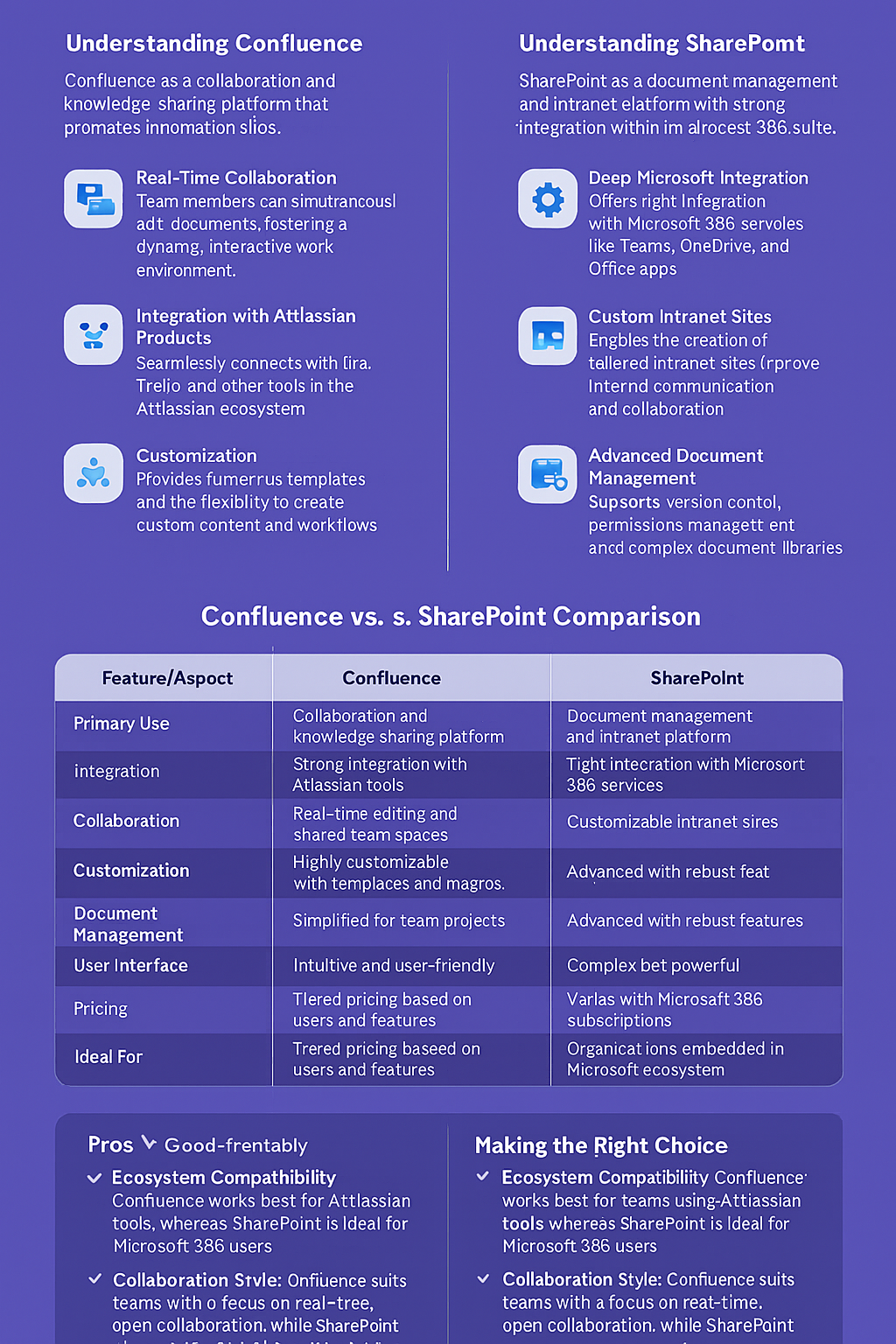
Confluence vs SharePoint: Which Is Better for Your Team?
Choosing between Confluence and SharePoint can shape how your organization collaborates, manages documents, and shares knowledge. While both tools offer robust capabilities, they cater to different use cases. This article compares Confluence and SharePoint in detail to help you decide which platform suits your business best.
Overview of Each Platform
Confluence is a collaborative workspace developed by Atlassian. It’s known for knowledge management, content creation, and real-time team collaboration. Designed with flexibility in mind, Confluence supports various content types—project plans, documentation, team notes—and integrates seamlessly with tools like Jira and Trello.
SharePoint, part of Microsoft 365, offers advanced document management, secure file sharing, and customizable intranet portals. SharePoint integrates tightly with Teams, Outlook, Word, and Excel—making it ideal for businesses already embedded in Microsoft’s ecosystem.
Key Feature Comparison
| Feature | Confluence | SharePoint |
|---|---|---|
| Core Function | Knowledge management and collaboration | Document management and file storage |
| Integration | Strong with Jira, Trello, and Atlassian tools | Deep Microsoft 365 integration (Teams, OneDrive, Outlook) |
| Real-Time Collaboration | Yes, with live editing and comments | Yes, using Office Online or Teams |
| Customization | Custom templates, macros, and themes | Intranet sites, web parts, Power Automate |
| Search Functionality | Strong, includes page trees and filters | Enterprise-grade, metadata and search refiners |
Use Cases and Ideal Teams
Confluence is ideal for agile teams, developers, and knowledge-based organizations that need to document frequently and collaborate openly. SharePoint excels in structured environments where document governance, access control, and compliance are top priorities—like finance, legal, or HR departments.
Pros and Cons
- Confluence Pros: Simple UI, fast deployment, strong project visibility, great for documentation-heavy teams.
- Confluence Cons: Less suited for file storage, limited governance tools compared to SharePoint.
- SharePoint Pros: Enterprise-grade security, file storage at scale, rich permission models, integrates across Microsoft tools.
- SharePoint Cons: Steeper learning curve, can feel complex for smaller teams or casual users.
Final Recommendation
Confluence is great for teams focused on collaboration, project planning, and transparent documentation. SharePoint is better suited for enterprises that need scalable file management and Microsoft 365 integration. Evaluate based on your existing ecosystem, team size, and long-term goals.
Note: Squirrel helps optimize your SharePoint environment by archiving outdated documents to Azure Blob Storage, improving performance and reducing costs.

